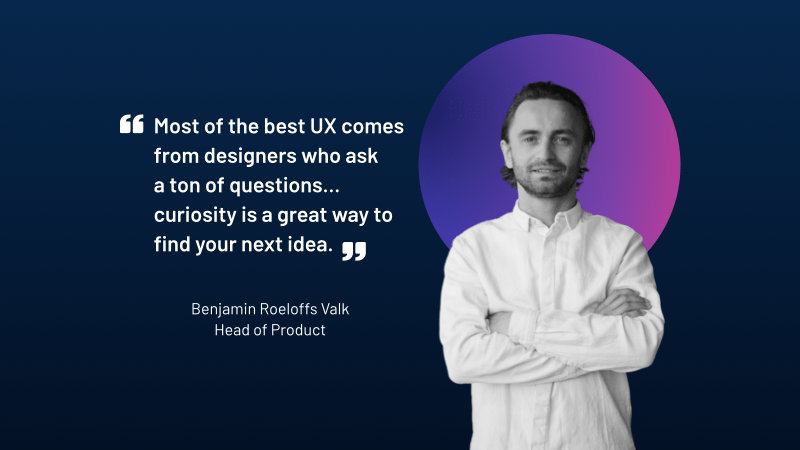Designing the WE.VESTR Experience
Q&A with Benjamin Roeloffs Valk - Head of Product @ WE.VESTR

Q&A with the Head of Product @ WE.VESTR
Where would we be without our product teams? These sherpas of the road map, champions of the vision, and defenders of the process are the true heartbeat of any product and are especially important for early-stage ventures.
Between balancing customer feedback and ongoing bugs, as well as spearheading product improvements and launching new features, the product team at WE.VESTR deserves their share of credit for our MVP launching in 18 months.
Benjamin Roeloffs Valk is the Head of Product at WE.VESTR. Whether in technology, software or music — Benjamin has spent his career and his life designing experiences. We sat down with Benjamin to talk about his process, his experience in leading the WE.VESTR product team and a few tips he has for other product teams.
Thanks for chatting with us Benjamin. Let’s start off with a bit of your background. How’d you get into product design?
From when I was a teenager, I was playing around with (web) design and coding in my free time. Years later during my study, I started diving more into design and noticed the shift it had been taking. This inspired me to keep up with the latest technology and trends and to create user-centered digital products.
With a product like WE.VESTR, what does the product development process look like? How do you take things from ideation to design to development?
From my point of view, the most valuable input from ideation to design to development is user feedback and research. The product needs to bring value to the user, so a deep understanding of the user’s pain points and goals is like gold for a product team.
I also feel it’s important that a product team works closely with the development team. We create our requirements with input from the user research, which then leads to wireframes and prototypes. We then test internally and externally, gather feedback and then ideate further on it. Finally, we bring the design to the final stage and discuss implementation together with the tech team.
The process is long, but it’s cyclical. I often find that when we start to build a feature off of initial user input, the future updates to that feature end up feeling like a conversation with our customer. I really like that part of the process.
Is there a secret to designing for user experience?
Well, beyond UX I think it’s important to remember that we’re designers — so rule number one is to be creative and free yourself of restrictions. You don’t need to reinvent the wheel each time, but don’t let yourself be locked into reuse either — there is always a chance that something new is available.
UX is challenging and always evolving so it’s difficult to identify one secret to it. I’d say trust the research and learn how to integrate input with your instinct. You can be creative and innovative while also being a student of the user.
Do you have any advice for product teams in the FinTech space, or otherwise?
Most of the best UX comes from designers who ask a ton of questions. I constantly find myself asking why certain products and experiences are the way that they are. Curiosity is a great way to find your next idea.
Okay last one — what’s this we hear of your history in building music events?
From when I was too young to enter a club, my friends and I started to host parties in The Hague. Eventually this grew to multiple parties a year, with even weekly parties during the summer and ultimately a full festival. Even now, more than a decade later, we occasionally host parties and events. I’ve always enjoyed music events as a way to put my creativity to work…outside of work.
When COVID hit in 2020, we started hosting virtual music experiences and called them “The Cloud Rave”. Soon enough, we started live streaming shows from different cities and countries around the world. It ended up really taking off when brands started to get involved like Budweiser.
Different than most other livestreams during that time, we were ‘live’ without a pre-recorded video. So, it could be a bit stressful. I remember we streamed from a location in Tel Aviv but were not able to travel there because of the pandemic. I ended up setting all the gear up through a Zoom call from Amsterdam! We took over the laptop in Tel Aviv from our couch in Amsterdam.
Funny, it really is an example of the life of a product designer. We use the tools that are available to achieve the vision and to deliver the experience.
To learn more about Benjamin and what we’re building at WE.VESTR, follow along on LinkedIn and our blog.
